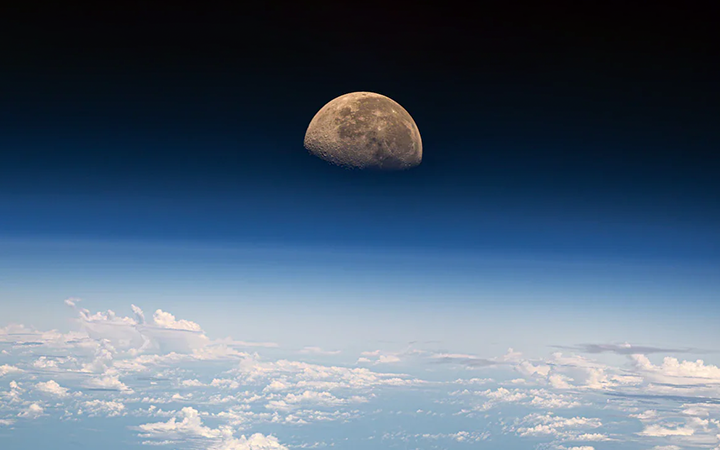NASA astronaut Matthew Dominick has once again captivated the world with his breathtaking photography from space. Known for his incredible images captured from the International Space Station (ISS), Dominick is now in the spotlight for a remarkable photo of the moon setting over the Pacific Ocean, which has quickly gone viral.
Using a Nikon Z9 camera, Dominick captured the stunning image while aboard the SpaceX Crew-8 mission. Sharing the photo on the social media platform X (formerly known as Twitter), he wrote, “The moon setting over the Pacific.” He added, “Went to the cupola to shoot Tropical Storm Hone near Hawaii, but right after we passed by the storm, the moon started to set.” The picture has since garnered significant attention, amassing over 5.94 lakh views and more than 17,000 likes.
The image itself is a striking portrayal of the moon descending toward the horizon, with a foreground bathed in shades of blue created by clouds and the Earth’s atmosphere. Captured on Sunday, August 25, Dominick provided the technical details of the shot, explaining, “400mm, ISO 500, 1/20000s shutter speed, f2.8, cropped, denoised.” The level of detail and clarity in the image has left netizens in awe.
The post generated a wave of reactions from social media users, with many praising the technical prowess required to capture such a shot. One user remarked, “Excellent detail for 400mm. Do I assume 1/20000 is a typo?” To this, Dominick responded, “Not a typo. f2.8 is a contributor. Also shooting bracketed shots at (5F, 1EV steps, 20 fps) because the moon sets quickly due to our orbital speed. Not a lot of time to adjust settings. Best just to shoot a lot.”
In his reply, Dominick also revealed that he had taken a series of shots over a brief period to capture the moon’s rapid descent. He noted that the posted image was shot at 21:34:45 GMT and that there was only a 14-second difference between the first and last shots, highlighting just how fast the moon appears to set from the perspective of the ISS.
The photo sparked further conversation among users, with one asking, “Always Nikon Z9?” Dominick responded that the crew generally prefers the Nikon Z9 over the D5s for both still photography and video. Other users shared their admiration for the image, with one commenting, “Star Wars vibes,” and another exclaiming, “Phenomenal! Thank you so much for sharing! Bravo!” A fellow astrophotographer also chimed in, stating, “As an Astrophotographer, man that’s one amazing shot!”
This awe-inspiring image of the moon was shared just two days after India marked the first anniversary of the successful landing of ISRO’s Chandrayaan-3 spacecraft on the Moon. The timing of the photograph adds an extra layer of significance to the image, connecting it to humanity’s ongoing exploration and fascination with our closest celestial neighbour.
The viral nature of this photo is a testament to the enduring appeal of space photography and the unique perspective that astronauts like Dominick can offer. Each image shared from space provides a glimpse into the vastness and beauty of the universe, reminding us of our place within it.
As we continue to explore the cosmos, images like Matthew Dominick’s moonset over the Pacific serve as powerful reminders of the beauty and mystery that lie beyond our world. For those who wish to keep up with the latest stunning visuals from space, make sure to follow NASA’s astronauts on their social media platforms for more awe-inspiring content.

